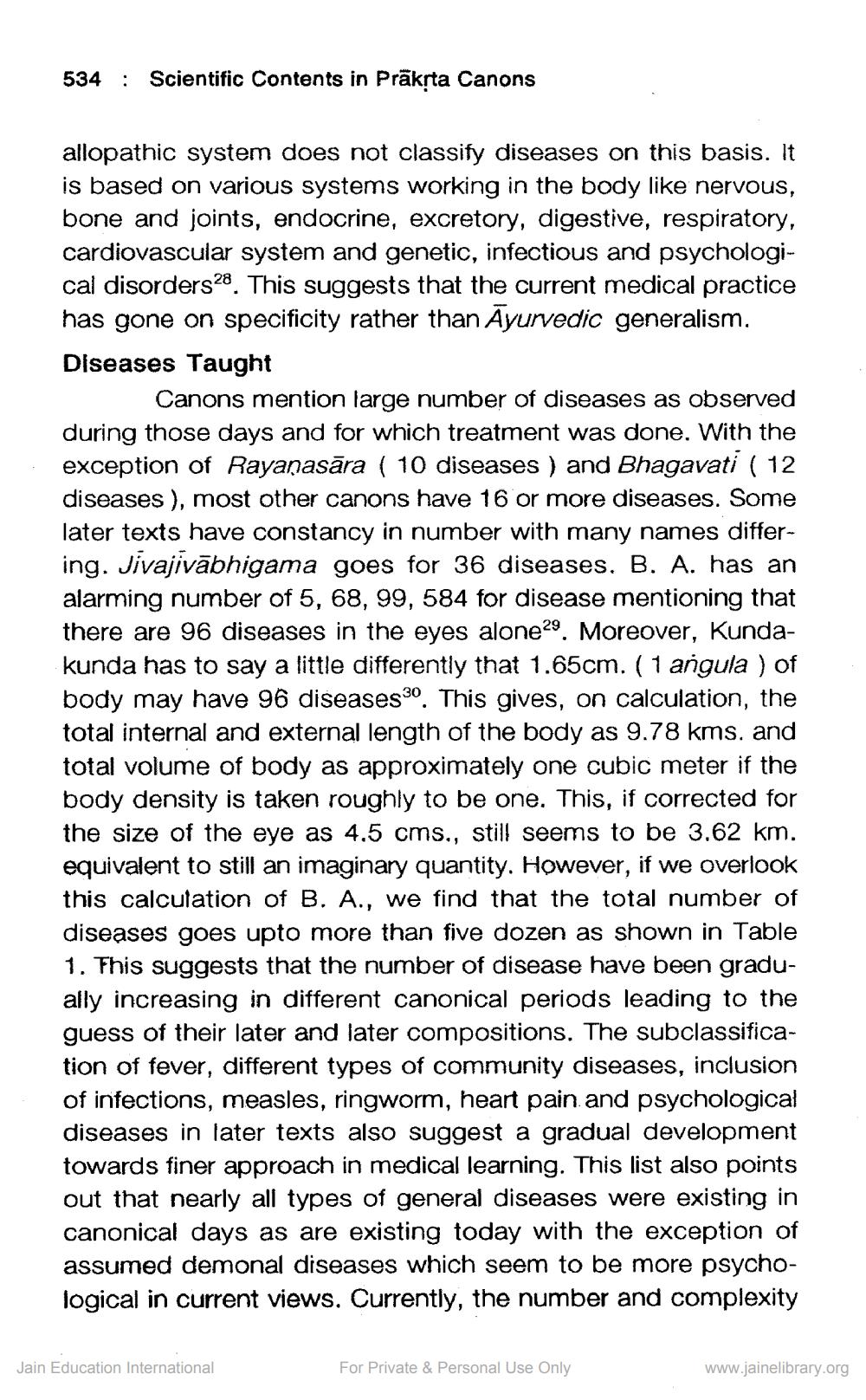________________
534 : Scientific Contents in Präkrta Canons
allopathic system does not classify diseases on this basis. It is based on various systems working in the body like nervous, bone and joints, endocrine, excretory, digestive, respiratory, cardiovascular system and genetic, infectious and psychological disorders28. This suggests that the current medical practice has gone on specificity rather than Ayurvedic generalism. Diseases Taught
Canons mention large number of diseases as observed during those days and for which treatment was done. With the exception of Rayanasāra ( 10 diseases ) and Bhagavati ( 12 diseases ), most other canons have 16 or more diseases. Some later texts have constancy in number with many names differing. Jivajivābhigama goes for 36 diseases. B. A. has an alarming number of 5, 68, 99, 584 for disease mentioning that there are 96 diseases in the eyes alone29. Moreover, Kundakunda has to say a little differently that 1.65cm. (1 angula ) of body may have 96 diseases 30. This gives, on calculation, the total internal and external length of the body as 9.78 kms. and total volume of body as approximately one cubic meter if the body density is taken roughly to be one. This, if corrected for the size of the eye as 4.5 cms., still seems to be 3.62 km. equivalent to still an imaginary quantity. However, if we overlook this calculation of B. A., we find that the total number of diseases goes upto more than five dozen as shown in Table 1. This suggests that the number of disease have been gradually increasing in different canonical periods leading to the guess of their later and later compositions. The subclassification of fever, different types of community diseases, inclusion of infections, measles, ringworm, heart pain and psychological diseases in later texts also suggest a gradual development towards finer approach in medical learning. This list also points out that nearly all types of general diseases were existing in canonical days as are existing today with the exception of assumed demonal diseases which seem to be more psychological in current views. Currently, the number and complexity
Jain Education International
For Private & Personal Use Only
www.jainelibrary.org




